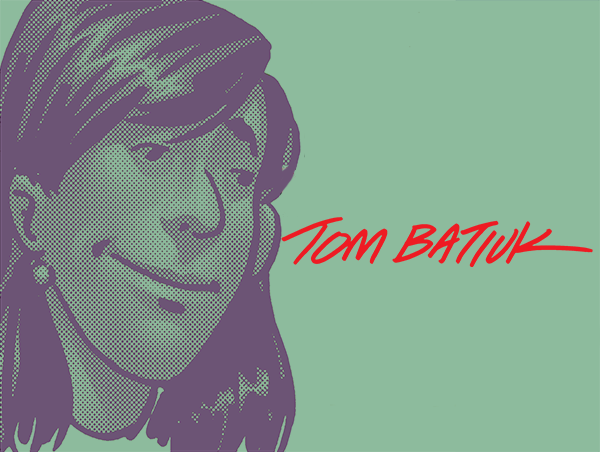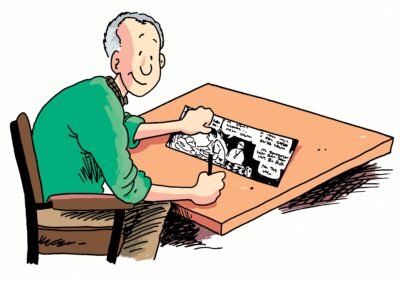×

Subscribe to Receive the Latest Updates
Subscribe to receive our monthly newsletter.
Published January 29, 2015
by Chris Schillig
Depending on whom you ask, America is the birthplace of only a small number of original art forms, anywhere from one to five.
Jazz is often at the forefront of a list that also includes the banjo, the mystery novel — and the lowly comic book. Regular readers of this column know I often wear my heart on my sleeve when it comes to comics. I credit them with nurturing my love of reading and with keeping my imagination alive during my formative years.
I can say with all earnestness that if not for the Incredible Hulk, Batman, the Fantastic Four, Donald Duck, and dozens of others, I would not have majored in English or become a teacher. Moreover, if not for artists and writers such as Jack Kirby, Steve Ditko, Stan Lee, Carl Barks and Frank Miller, I would not have been inspired to put my own thoughts on paper.
Like any art form, comics have grown and changed. Some of the earliest comic books were merely collections of newspaper comic strips. Later, when the concept had proven its profitability, companies began to commission original material. Decades later, publishers began to collect individual comic books into more permanent form — paperbacks and hardbacks. From this innovation came the modern graphic novel, a mixture of words and pictures designed to tell a longer story.
A few years ago, I had the opportunity to interview Harvey Pekar, whose autobiographical work with various artists stretched the boundaries of what comics could do. Pekar recognized that many Americans still viewed comics as essentially kids’ stuff, a judgment that was somewhat justified by the industry’s fixation with superheroes.
“Comics are as good an art form as any other,” Pekar told me. “You can use any word in the dictionary … you’ve got the same choices as Shakespeare.”
Perhaps a similar sentiment ran through Tom Batiuk’s head as he decided to steer his “Funky Winkerbean” comic strip in a more serious direction in 1999. By giving one of the characters cancer, he was announcing that comic strips, like comic books, need not be restricted to gag-a-day formats and juvenile subjects. This was even more apparent when the same character’s cancer returned with a vengeance in 2007.
That story line has been collected in “Lisa’s Story: The Other Shoe,” this year’s One Book One Community collection in Alliance. As my teaching colleagues Ron Hill and Jim Christine noted in a presentation at Rodman Public Library last week as part of the OBOC programming, “Lisa’s Story” is not technically a graphic novel, as it was not originally created to be published between two covers. Still, as a collection of strips that work together thematically to tell one long story, it fits the important part of the definition.
As a member of the OBOC committee, I have long hoped that we would one day select a graphic novel or compilation for the community to enjoy. I’m hard-pressed to think of a better representation of the power of words and pictures, each contributing to a story in a medium that is related to, but different from, movies and novels, than “Lisa’s Story.”
The main character’s journey — her reactions to her diagnosis, her relationship with her husband, her battles with insurance companies and her advocacy on behalf of additional research — is as poignant, and as appropriate, in comics format as it would be anywhere else.
Just as jazz, mystery novels, and even the twangy banjo evolved from their earliest conceptions, so too have comics. I hope readers will keep an open mind as they consider diving into this year’s OBOC selection and not dismiss it out of hand because it uses pictures to help carry its narrative weight.
Pekar was right: Comics creators have all the same choices as the Bard or any other literary luminary. The proof can be found in “Lisa’s Story.”
chris.schillig@yahoo.com
cschillig on Twitter


